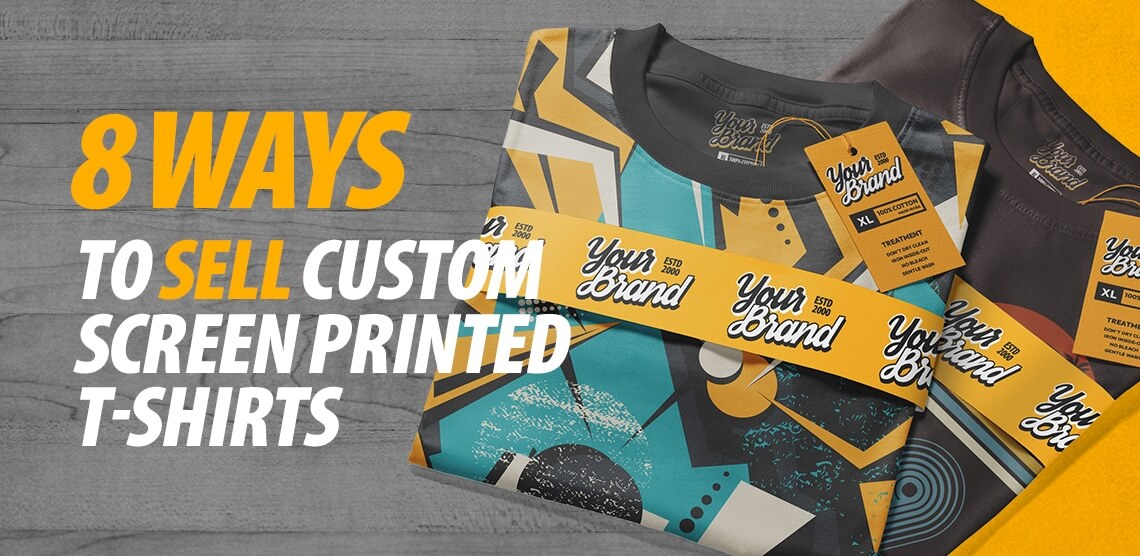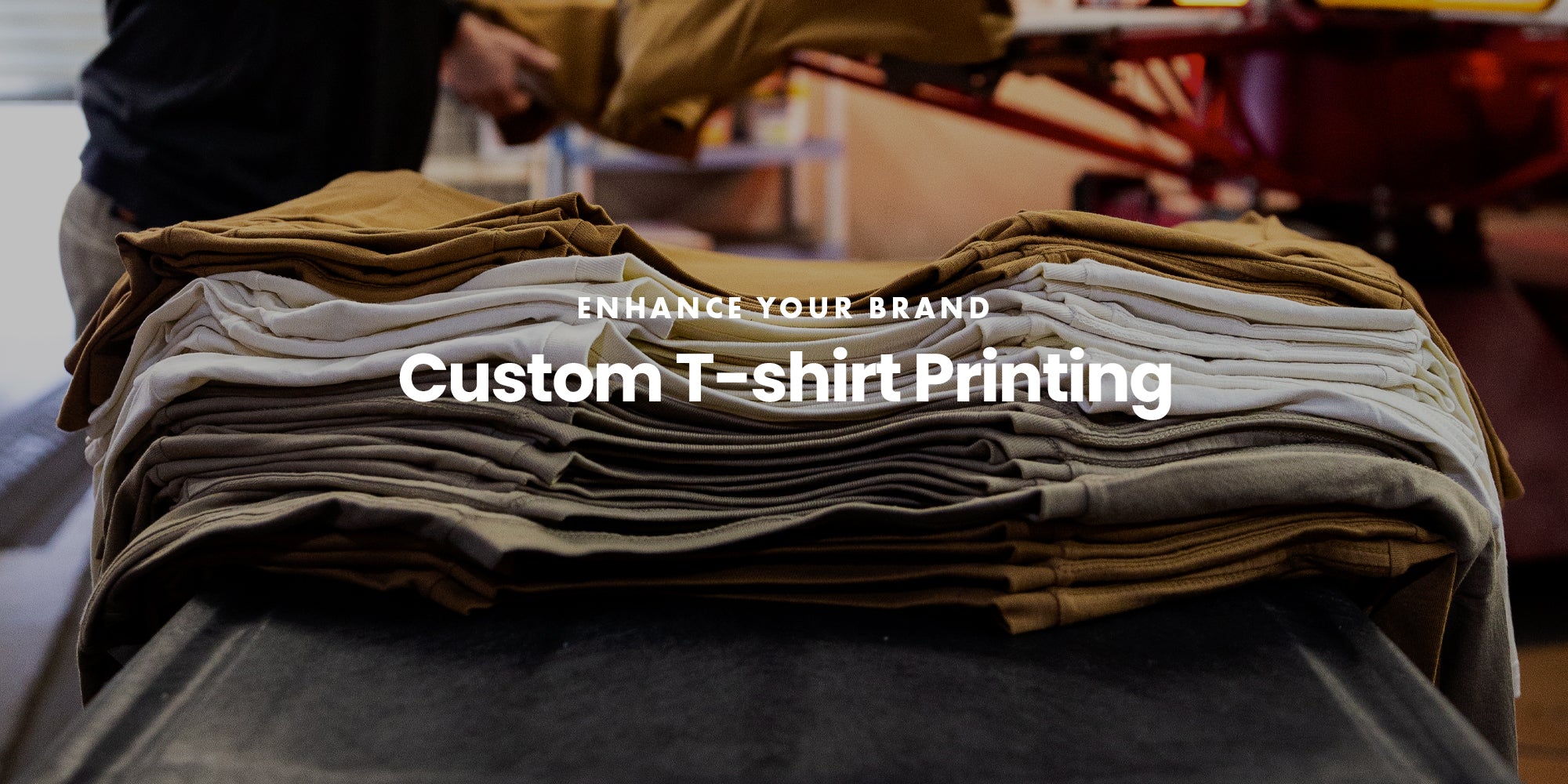Display Printing Uncovered: Everything You Required to Find Out About Tee and Garment Printing Methods
If you have actually ever wondered exactly how those dynamic layouts wind up on your favored t-shirts, you're in the best location. Screen printing is an interesting technique that integrates art with technique, offering unlimited opportunities for imagination. Comprehending the fundamentals, from tools to ink options, can substantially influence your outcomes. Ready to discover the vital aspects that make display publishing an art kind? Allow's discover the details that can elevate your jobs.
The Fundamentals of Display Printing: How It Functions
When you plunge right into display printing, you'll discover it's both an art and a scientific research. At its core, screen printing involves producing a pattern, or display, that enables ink to pass through only in details locations.
Position the screen over the fabric, after that utilize a squeegee to press ink via the screen onto the garment. Each step is crucial, and mastering them will elevate your display printing abilities, transforming basic garments right into special, expressive pieces.
Kinds of Display Printing Methods
When you realize the essentials of display printing, it's time to check out the various strategies that can elevate your designs. One popular approach is typical display printing, where ink is pressed through a stenciled screen.
An additional option is plastisol printing, recognized for its sturdiness and vivid shades, making it a preferred for several brand names. Experiment with halftone printing to develop gradient effects and detailed designs.
Important Tools for Display Printing
To attain stunning results in display printing, having the appropriate tools is basic. You'll require a durable display printing framework, which holds the mesh that transfers your design onto the garment. Next, spend in high-grade squeegees; these are vital for using ink equally throughout the screen.
Choosing the Right Inks and Materials
When picking inks and materials for display printing, you require to take into account the type of ink that works best for your task. Think of textile compatibility to ensure your designs look last and wonderful long. Explore green ink choices to make your printing procedure much more sustainable.
Kinds of Screen Inks
Picking the appropriate screen ink is essential for accomplishing dynamic, long lasting prints that fulfill your job's demands. There are a number of sorts of screen inks to check out. Plastisol ink is popular for its versatility and ease of use, offering outstanding shade opacity on dark textiles. Water-based ink, on the other hand, uses a softer feel and is eco-friendly, making it suitable for those seeking to reduce their ecological influence. Discharge inks remove dye from the fabric, causing a soft, vintage appearance yet require details handling. Specialized inks, such as metal or glow-in-the-dark, can add distinct results to your styles. Evaluate your project needs and select the ink that lines up finest with your preferred result.

Material Compatibility Factors To Consider
Recognizing fabric compatibility is important for attaining high-grade screen prints, specifically since various materials respond distinctly to different inks. When choosing inks, take into consideration the material type-- cotton, polyester, or blends. For cotton, water-based inks work well, using softness and breathability. Polyester, on the other hand, usually calls for plastisol inks for much better attachment and lively shades. You could require to make use of a combination of both types if you're printing on blends. Always examine your inks on example textile to assure they adhere properly and maintain color integrity. Furthermore, remember that textile weight and appearance can impact the last outcome, so choosing the ideal ink and material combination is essential for your job's success.
Eco-Friendly Ink Options
Environment-friendly inks are becoming a prominent option for screen printers who wish to lessen their environmental impact while keeping high quality. When choosing inks, take into consideration water-based inks, which are much less hazardous and less complicated to cleanse up compared to typical solvents. These inks bond well with materials, providing dynamic results without harmful chemicals. You might likewise explore eco-solvent inks that use less unpredictable organic compounds (VOCs), making them a much safer option for both your health and wellness and the world.
In addition, look for inks made from renewable energies, such as soy or vegetable-based options. By choosing the appropriate inks and materials, you'll not only produce magnificent designs but also add to an extra lasting printing procedure. Make the button, and your prints will certainly mirror your commitment to the atmosphere!
Preparing Your Design for Screen Printing

File Style Demands
To assure your layout looks vibrant and sharp on textile, you'll need to pay close attention to file style needs for display printing. Make sure your layout has a transparent history to protect against unwanted white edges on your prints. Maintain color modes in mind; CMYK is conventional for display printing, so convert your RGB creates appropriately.
Color Splitting Up Techniques
Shade splitting up is a crucial step in preparing your style for screen printing, and mastering it can considerably enhance your print high quality. You'll require to damage your style into individual colors, as each color needs a different display throughout printing. Beginning by identifying all the shades in your design and create layers each. You can make use of software program like Adobe Photoshop or Illustrator to separate and separate shades effectively. Be particular to save each layer as a separate data, typically in a layout like TIFF or PSD. This accuracy not just ensures accurate shade depiction yet also streamlines the printing procedure. By taking notice of color splitting up, you'll accomplish professional and vivid cause your screen-printed garments.
Resolution and Size
Attaining the best lead to screen printing starts with ensuring your layout has the ideal resolution and size. Ideally, your art work ought to be at least 300 DPI (dots per inch) for sharp, clear prints. Your last item might look pixelated and amateur. if you use reduced resolution.
When it pertains to size, think about the measurements of your print location. Design your artwork to match the final print size, preferably producing it in the real dimensions you'll be publishing. In this manner, you'll prevent any unanticipated scaling concerns.
Constantly examine your style in both vector and raster styles. Vector graphics can be scaled without losing quality, making them optimal for display printing. Preparing correctly will ensure your design looks fantastic on every garment!
Step-by-Step Display Printing Process
Display printing is a dynamic process that permits you to produce vibrant designs on different surfaces. To get going, you'll require a display, solution, and your selected ink. Prepare your screen by cleaning it thoroughly. Next off, use the emulsion equally and let it completely dry in a dark location. As soon as dry, expose your screen to light with your layout positioned on it, which will certainly solidify the emulsion where the light hits, producing a stencil - screen printing kit.
Put ink onto the display and use a squeegee to push the ink through the stencil onto the material. Lift the screen thoroughly and let the print dry. You've successfully screen printed your style.
Tips for Successful Screen Printing Projects
While you're diving into your screen printing jobs, keep in mind that preparation is vital to success. Start by gathering all your weblink products-- inks, squeegees, garments, and screens. A tidy work area assists stop unwanted mistakes, so neat up prior to you begin.
Next, validate your artwork is high-resolution and appropriately sized for your garment. Evaluate your screen for proper direct exposure and tidy it thoroughly to prevent smudges. When blending your inks, adhere to the producer's standards to accomplish the appropriate uniformity.
During printing, apply also pressure with your squeegee for consistent outcomes. Don't rush; take your time to confirm each print satisfies your requirements. After printing, let your garments dry totally before taking care of or packaging them.
Lastly, always keep a sample of your help future reference. In this manner, you can evaluate your development and boost your techniques over time. Delighted printing!

Often Asked Questions
How much time Does It Take to Establish up a Display Printing Work?
Establishing up a screen printing task usually takes about thirty minutes to an hour. You'll prepare the displays, mix inks, and change the press. The moment differs based on complexity and experience, so stay arranged!
Can I Publish on Different Textile Enters Using the Exact Same Technique?
Yes, you can print on different material types utilizing the exact same technique, however you'll require to adjust your inks and settings. Some textiles soak up ink differently, so experimenting guarantees the very best outcomes for each material.
What Prevail Errors to Avoid in Display Printing?
When display printing, stay clear of typical blunders like making use of the incorrect ink, disregarding appropriate direct exposure times, or missing pre-press checks. Always examine your configuration and preserve tidy screens to assure quality outcomes each time.
Exactly How Can I Correctly Clean and Keep My Screen Printing Devices?
To effectively tidy and preserve your display printing devices, you ought to frequently wash screens with proper solvents, inspect squeegees for wear, and assure all devices are saved dry and dust-free. Consistency enhances and protects against expensive repair work performance.
Is Screen Printing Eco Pleasant Contrasted to Various Other Methods?
Display printing can be a lot more eco pleasant than other approaches, particularly if you utilize water-based inks and eco-conscious products. By selecting sustainable supplies and methods, you decrease waste and minimize your influence on the earth.
Screen Printing Uncovered: Everything You Required to Know Concerning T-Shirt and Garment Printing Techniques
At its core, display printing entails producing a pattern, or screen, that permits ink to pass with just in specific locations. Placement the screen over the textile, after that investigate this site make use of a squeegee to push ink via the screen onto the garment. One popular technique is conventional display printing, where ink is pushed through a stenciled display.When picking inks and materials for display printing, you need to take right into account the kind of ink that works ideal for your project.